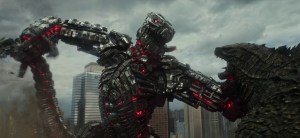The Simpsons‘ Ned Flanders got the real-life treatment from a fan and the results are pretty shocking. Hossein Diba showed off their work on Instagram and fans got quite a kick out of this photo edit. There have been so many “turning cartoon characters into real people” photoshops in the last few years, but rarely do they have the sort of uncanny strangeness that Springfield’s residents seem to generate. Flanders has been a staple of The Simpson since very early in the series. His affable goodness and infuriating chipper nature have made him an enduring part of the pop culture landscape. From him being wildly fit or the hysterical memes of him in his skiing outfit, there is just too much comedy to be mined from his interactions with Homer. If you’re looking to see for yourself, Diba’s post is down below:
Videos by ComicBook.com
He wrote, “My take on Ned Flanders from The Simpsons #3dart #nedflanders #thesimpsons #3dartist #artwork”
View this post on Instagram
During the quarantine period last year, a 1993 Simpsons episode called Marge in Chains made the rounds on social media. Focusing on the “Osaka Flu” and some aggressive hornets, fans thought the show was predicting the future again. Series writer and producer Bill Oakley expressed some hesitancy to give credence to those calls on social media.
“I don’t like it being used for nefarious purposes,” Oakley said to The Hollywood Reporter. “The idea that anyone misappropriates it to make coronavirus seem like an Asian plot is terrible. In terms of trying to place blame on Asia — I think that is gross. I believe the most antecedent to (Osaka Flu) was the Hong Kong flu of 1968. It was just supposed to be a quick joke about how the flu got here.”
“It was meant to be absurd that someone could cough into box and the virus would survive for six to eight weeks in the box,” he continued. “It is cartoonish. We intentionally made it cartoonish because we wanted it to be silly and not scary, and not carry any of these bad associations along with it, which is why the virus itself was acting like a cartoon character and behaving in extremely unrealistic ways.”
“There are very few cases where The Simpsons predicted something,” Oakley also mentioned. “It’s mainly just coincidence because the episodes are so old that history repeats itself. Most of these episodes are based on things that happened in the 60s, 70s or 80s that we knew about.”
Does real-life Flanders freak you out? Let us know in the comments!









